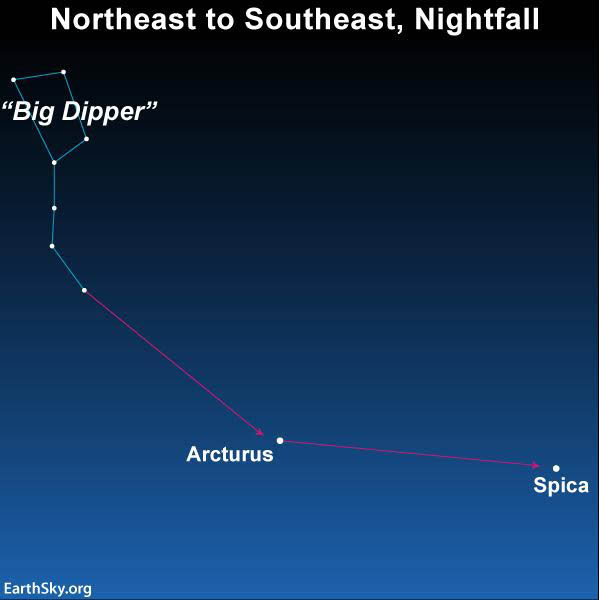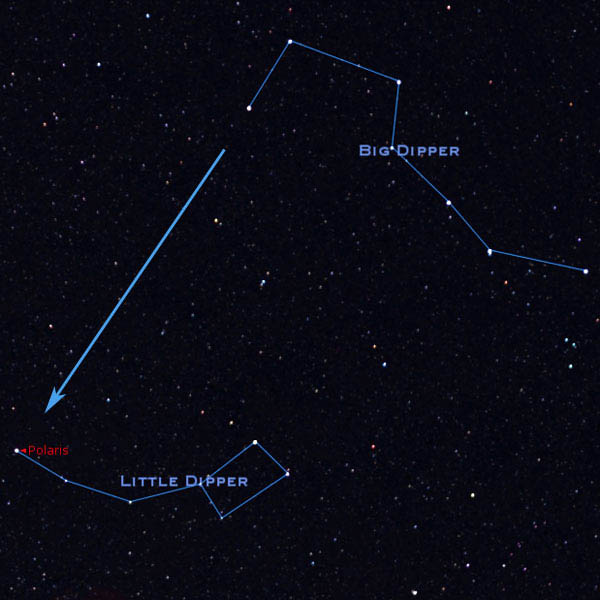
DIPPING IN TO SPRING
With the weather warming up, it’s time to resume my stargazing blog. Many people are familiar with the stars of the Big Dipper. Four stars form the bowl, and three the handle. The Big Dipper is actually part of the constellation Ursa Major, the Great Bear, but most of the other stars are dim and it is hard to make out much more than the Dipper if you live relatively close to city lights.
Look very closely at Mizar, the star at the bend in the handle of the Big Dipper. If you have good eyesight and the night is dark enough, you may glimpse the tiny star Alcor next to it- binoculars can help. If you aim a telescope at Mizar, you will see that it has a very close companion star, with Alcor widely separated. Very large telescopes and spectroscopic instruments indicate that both components of the Mizar system, as well as Alcor, are all double stars themselves, making up a six star system! Supposedly, being able to see Alcor with your unaided eyes was a test of vision in ancient times.
Many people know that the two stars in the Big Dipper’s bowl farthest from the handle are known as the Pointers, because they point to Polaris, the North Star. Polaris is so named because it is almost exactly above the north pole of the Earth. From St. Louis, Polaris always appears nearly halfway up in the north, with all the other stars appearing to revolve around it. From more northerly latitudes, Polaris appears higher, from more southerly latitudes lower. The Earth’s axis actually nutates, or wobbles, over a 25,000 year period, so Polaris has not always been and will not always be the “North Star.” We in the Northern Hemisphere are fortunate that a relatively bright star is so close to being near the North Pole of the sky. The southern hemisphere is not so lucky, as the current “South Star,” Sigma Octantis, is hardly even visible to the unaided eye. Polaris is at the end of the handle of the Little Dipper, or Ursa Minor. The Little Dipper’s stars are mainly faint, so it is hard to see it all if you are close to the city.
The Big Dipper can also be used to locate other noteworthy sights. Around 9 o’clock in the evening at this time of year, follow the arc of the Big Dipper’s handle to the bright star Arcturus, in the northeast, and continue on to Spica, low in the southeast. When I was a child, I was taught to “arc to Arcturus, and speed on to Spica.” If you draw the line of the Pointers the other direction they point to the stars of the constellation Leo, the Lion, whose brightest star is Regulus. Leo will be the subject of next month’s blog.

